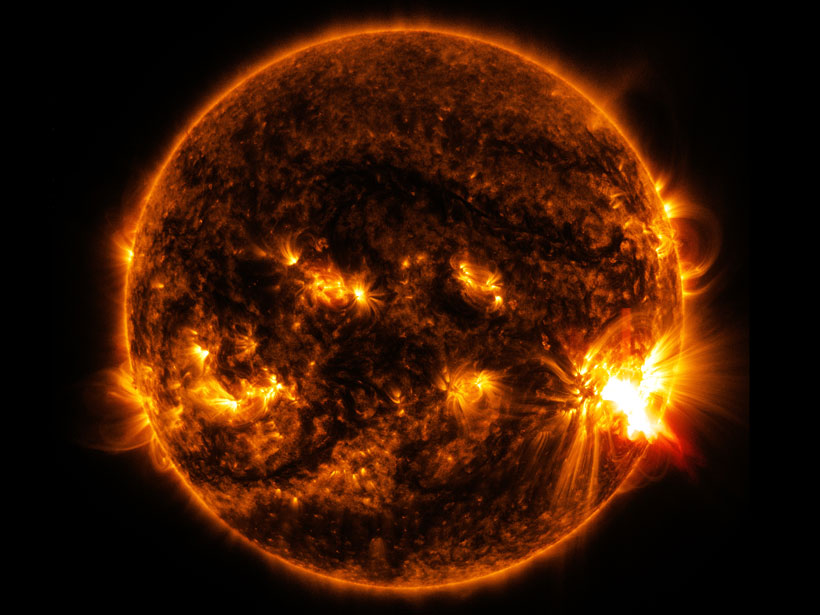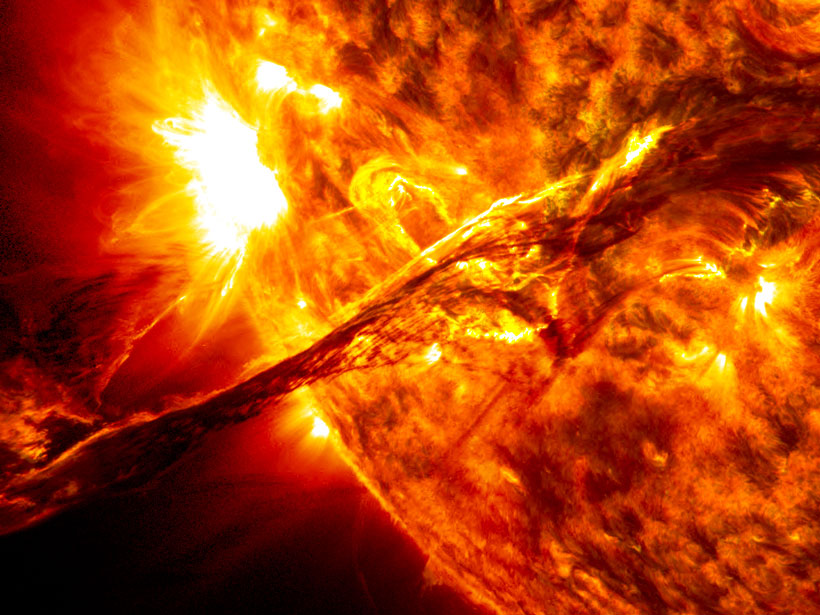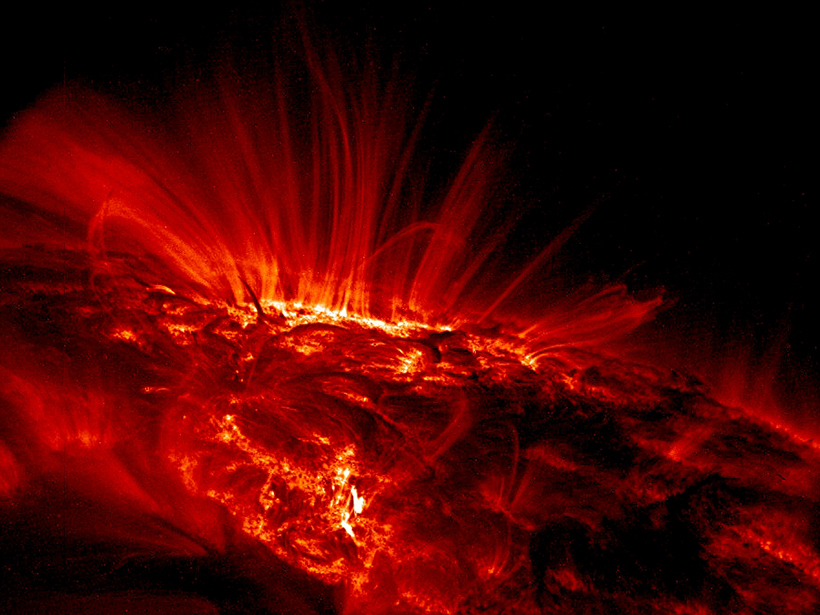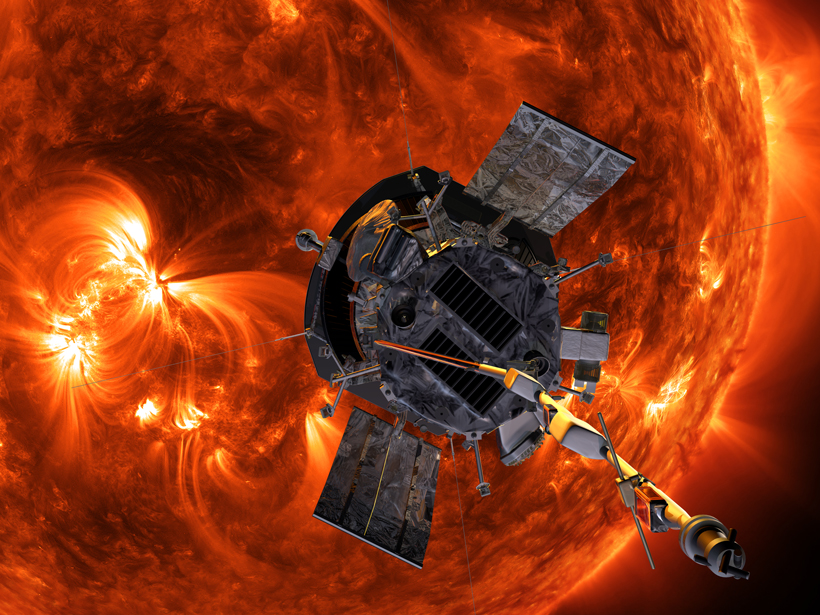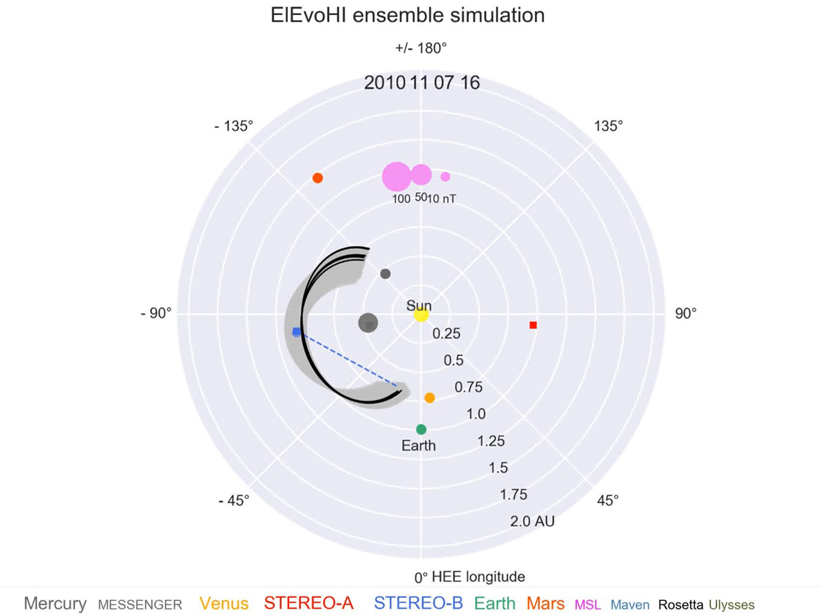Radio waves are providing a new way to probe the Sun and suggest that the magnetic field of its corona may be stronger than long thought.
the Sun
Researchers Reproduce Processes Behind Astrophysical Shocks
Studying shock precursors in a laboratory setting enables researchers to take a different look at the precursors’ properties and the physics behind them.
Moon Sheds Light on Early Solar Spin
Lunar samples reveal that the Sun spun relatively slowly in its first billion years and blasted the Earth and Moon with coronal mass ejections.
Here Comes the Sun
This August, we look at the relationship we have to our closest star for AGU’s Centennial.
Looking Straight at the Sun
Thanks to some crucial calibrations, the world’s biggest solar telescope will have a clearer view of the Sun.
Higginson Receives 2018 Fred L. Scarf Award
Aleida Higginson will receive the 2018 Fred L. Scarf Award at AGU’s Fall Meeting 2018, to be held 10–14 December in Washington, D. C. This award is given annually to “one honoree in recognition of an outstanding dissertation that contributes directly to solar–planetary science.”
Better Data for Modeling the Sun’s Influence on Climate
Several international initiatives are working to stitch together data describing solar forcing of Earth’s climate. Their objective is to improve understanding of climate response to solar variability.
First Spacecraft to Touch the Sun Awaiting Launch
The Parker Solar Probe will study the Sun’s corona and its electric and magnetic fields, as well as the mechanisms that drive the solar wind, all from behind an advanced protective heat shield.
Forecasting the Threat from the Sun
Ensemble techniques are opening a path toward space weather forecasts that give deeper understanding of the risk posed by each solar storm that approaches our planet.
Edward L. Chupp (1927–2017)
This pioneer in high-energy solar physics devised instruments for observing solar and cosmic ray emissions with which he detected, for the first time, nuclear gamma rays from solar flares.


